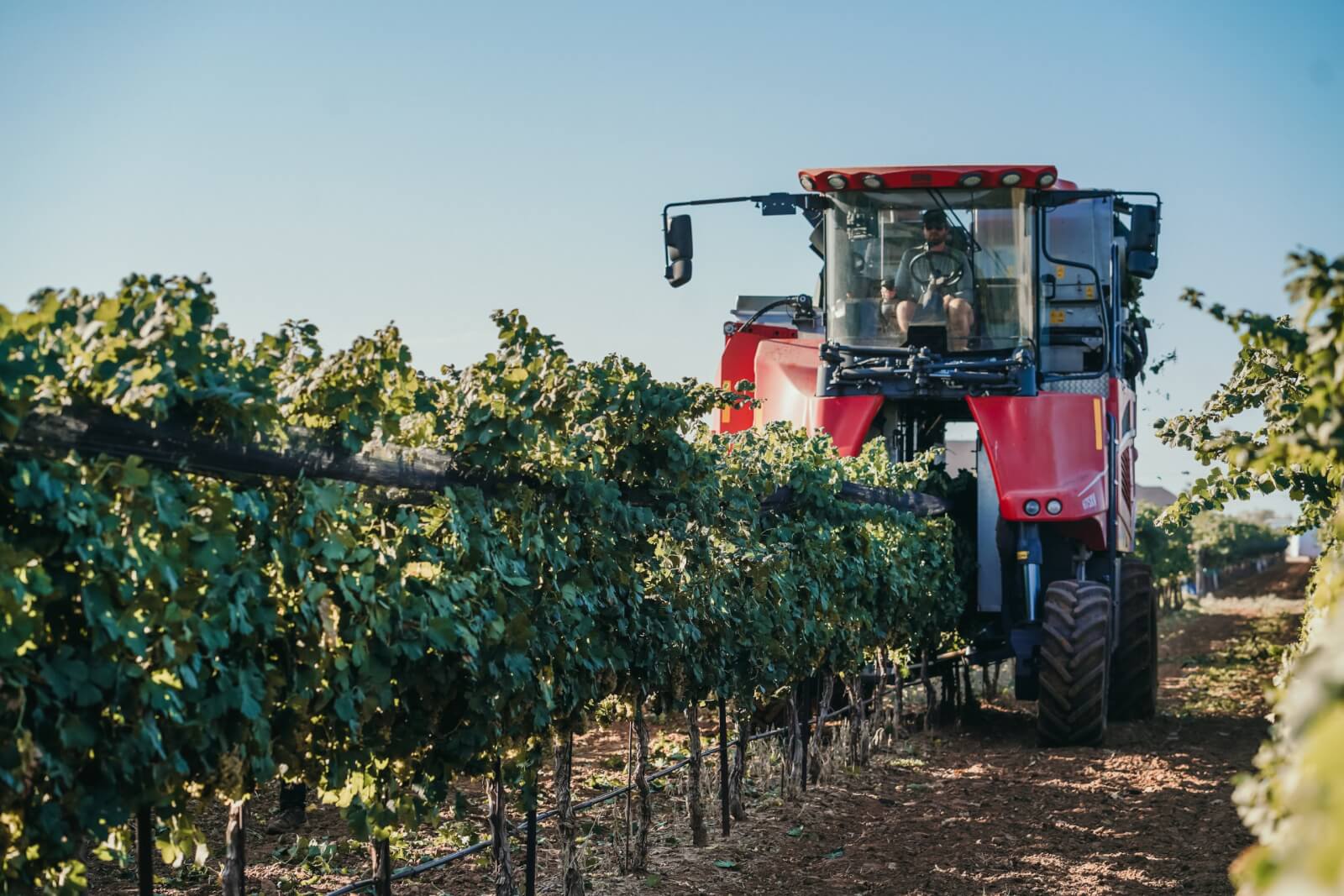




From humble beginnings to luxury indulgences, up on the caprock the Texas High Plains AVA (American Viticultural Area) grows over 85% of Texas’ wine grape production. The dry, semi-arid climate coupled with the rich, draining soil are among the conditions that makes the area stand out from other grape growing regions across the state. Wine enthusiasts are given a true vine-to-glass experience when visiting the surrounding wineries’ tasting rooms. For an in-depth look into Texas wine, we take it back to the vines with local winemakers Dr. Vijay Reddy, Andy Timmons, and Kim McPherson.
Twenty-five years ago, Reddy planted his first five acres of Cabernet Sauvignon with more than two decades of farming experience. With a Ph.D. in soil sciences and plant physiology, his expertise led him to a gold medal from his first planting. Today, Reddy Vineyards reaches nearly 400 acres with 38 varietals with more room to grow.
“Texas is on the map not just across the country but around the world, and the industry is only growing more. People are realizing we can grow not only cabs, but other grapes also,” said Reddy.
Reddy attributes the percolation of the deep calcareous caliche soil that is well draining to the region’s optimal grape growing conditions. In fact, he says that some grapes have a root system up to 20 feet deep which makes for healthy plants that can pull water when needed.
Another contributing factor to a grape’s early life is the climate. Terry County, which has been deemed the grape growing capitol of Texas, approximately one hour southwest of Lubbock, sits at an elevation of 3,200 feet. Because of the lack of humidity, Reddy says he doesn’t have to use as many herbicides as a vineyard in a more humid climate would. As for the West Texas wind? This creates a hardier fruit with thick skins and stalks that can withstand the conditions.
A born and raised West Texan, Timmons is a generational farmer with High Plains soil in his DNA. In 2006, he traded cotton and peanuts, which the region is predominantly known for, and planted his first five acres of Merlot. What he found in the vine was not only award-winning wine but a lucrative legacy that could be passed on to future generations, like what had been left to him. Sixteen years later, Timmons has established himself as a leader in the Texas wine industry.
Timmons’ years of farming experience coupled with his plant and soil science degree from Texas Tech University provided him with the knowledge base needed to grow his five acres into over 350 with 20 different varieties of grapes.
“Most of the good wine growing regions have a good day to night temperature shift, and the way the High Plains has it is through the elevation,” Timmons said. “Because of this, we have an advantage over other areas and can extend our growing season a lot longer.”
The hot days paired with the cool nights allow for grapes to experience what Timmons describes as a natural cooling process, rather than through respiration which utilizes energy that pulls acidity out of the berry. More acidity in the fruit translates to a sweeter grape. When the grapes have reached the desired sweetness, it’s time for harvest.
The team at McPherson Cellars makes their way to the vineyard during the coolest hours of the morning to harvest, which varies based on varietal. While white grapes are sent directly to crush, red grapes are first destemmed and cleaned at the vineyard and then sent to the tank, bypassing the press.
From here, McPherson details the different methods that go into making a red, white or rose. Regardless of the varietal, each process is a timely endeavor. While some take months to perfect, others age for over one year.
A legacy of his own, Kim McPherson is the son of the ‘Father of Texas Wine’ Dr. Clinton ‘Doc’ McPherson. After studying grape growing and winemaking in California in the 1970s, McPherson made his way back home with a vision for what Texas wine would one day become. Today, McPherson Cellars is a thriving operation with a perfected strategy.
McPherson describes his style of winemaking as “old world”, meaning he tries to handle the wine as little as possible. Each of his wines do not exceed an alcohol content of 13.8%, offering those who enjoy the experience of each flavor profile.
An award-winning approach to winemaking, McPherson is a twice nominated James Beard Semi-Finalist Winemaker. His philosophy – resilience and tenacity. “Here you have to work,” he said. “We are thankful for all the fruit we get. We make it work and, wa-lah! You see it.”
Inside each bottle of wine features years of grit and passion that encompasses the art of winemaking. The expertise and spirit shared amongst these generational farmers and winemakers showcase the down-to-earth nature of the people of West Texas. And just like
the people, an unexpected region makes for the most notable wines.
By: Maggi Gallaspy
By: marketinginterns
By: Intern
By: Intern
5